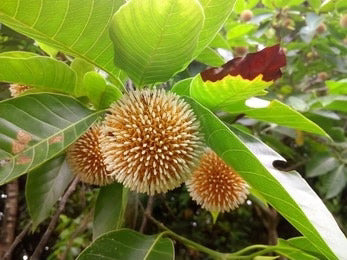The ancient Vedic medical system, commonly known as Ayurveda, is a wholly natural and holistic approach to physical and mental health. It is founded on the Vedas. One of the oldest methods still in use today as a traditional form of caregiving is Ayurveda, which is frequently practiced in our homes by our mothers or grandmothers. Deeply ingrained throughout India and its neighboring nations, ayurvedic medicine is used to treat a wide range of illnesses, including diabetes, cardiovascular disease, liver disease, and many others. In this post, we'll talk about a crucial medicinal plant that belongs to the Rubiaceae family. Kadamb is a religiously significant decorative plant and one of the most commonly planted trees in the tropics. It has a fragrant, sweet, and somewhat acidic flavor.
General Information
Mythology holds that the elements of fire, earth, air, soil, and water, which are also present in people, animals, and plants, make up our planet. The Rubiaceae family, often known as Kadamba in Hindi, includes Anthocephalus Indicus. Diabetes mellitus, diarrhea, inflammation, debility, and other conditions can all be treated with kadamb. This herb's names in Sanskrit are neep, priyak, vrittpushp, and halipriya, whereas in Hindi it is most widely known as kadam and in Gujarati as Kadamba.
Special Note About Kadamb
The bark of this plant contains natural steroids that aid in lowering blood glucose levels as well as cinchotannic acid, which is abundant in the bark.
Systemic Classification
Botanical Name - Anthocephalus Indicus
Family - Rubiaceae
Genus - Neolamarckia
Species - N. Cadamba
Synonyms
- Vrittpushpa (Because of its circular shape, flowers)
- Halipriya (These are popular among farmers since their flowers blossom throughout the rainy season)
Varieties
Dharakadamb - whose flowers blossom when it rains.
Dhulikadamb - Before the rainy season or in the summer, its blossoms bloom.
Bhumi Kadamb - There are tiny flowers and a small tree there.
Habitat
- A fully developed tree with widely spaced branches that grows quickly between the ages of six and eight.
- This tree's straight trunk measures 30 feet in height and 5 to 7 feet in breadth.
- It has round, five to ten-inch long leaves that mimic the Mahua tree's eaves and are five to ten inches long. The many vein-like systems in leaves make them incredibly delicate.
- It has tiny, globular heads of blooms that are crimson to orange in color and have a sweet scent.
- The fruit is tiny, fleshy yellow-orange in color, and contains about eight thousand seeds. These are around two to two and a half inches in diameter.
- It grows on the Himalayan ghats from Nepal to Burma and from South Mysore to the western ghats. It is only found in Assam and the Andaman Islands.
Ayurvedic Properties
|
|
Hindi / Sanskrit |
English |
|
Rasa (Taste) |
Tikta, Kashaya |
Bitter, Astringent |
|
Guna (Physical Property) |
Ruksha |
Dry |
|
Virya (Potency) |
Sheeta |
Cold |
|
Vipaka (Post-Digestive Taste) |
Katu |
Pungent |
Effect on Dosha
It balances the Vata, Pitta, and Kapha dosha
Classical Categorization
This herb's therapeutic virtues and uses have been documented in Raj Nighantu, Kaiydev Nighantu, and Dhanwantri Nighantu.
This herb is referenced by Acharya Charak in:
- Vamanopag mahakashaya
- Vedana sthapana mahakashaya
- Shukra shodhan mahakashaya
This herb has been referenced by Acharya Sushrut in:
- Rodhradi Ganna
- Naygrodadhi Ganna
Practical Uses
- It is applied topically to reduce pain and acts as an effective anti-inflammatory, helping to speed up the natural healing of wounds.
- Its heated leaves are used to cover ulcers that are healing, and it then provides pain and inflammation alleviation. Its bark paste is placed all over the eyes to treat catarrh.
- With the use of a leaf decoction, we can wash our wounds and treat mouth-related conditions with gandhush, which literally translates to "oil pooling."
- The bark's decoction is utilized for irritable bowel syndrome and diarrhea.
- Its fruit is a powerful weapon against the Trishna rog.
- The bark of this shrub is used as a decoction to treat bleeding diarrhea.
- This is beneficial in fighting raktaj and inflammatory disorders in the circulatory system.
- This plant is used to treat coughs and other chronic disorders of the respiratory system.
- The decoction of roots is utilized in kidney stones or even little pieces may be placed into ureters to manage the situation of urine retention.
- Its bark is used to treat diabetes and leukorrhea, and its fruit is effective in maintaining appropriate mammary gland growth.
- This plant can aid with skin disorders such as filariasis and psoriasis.
Part used
Uses for fruits and their bark
Dosage
3 to 6 grams of its bark powder can be consumed.
Its fruit juice, which has great effects, can be consumed up to 10 to 20 ml at a time.

